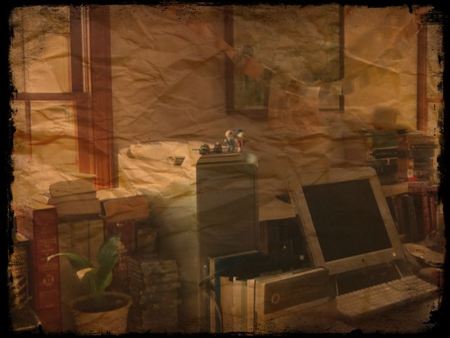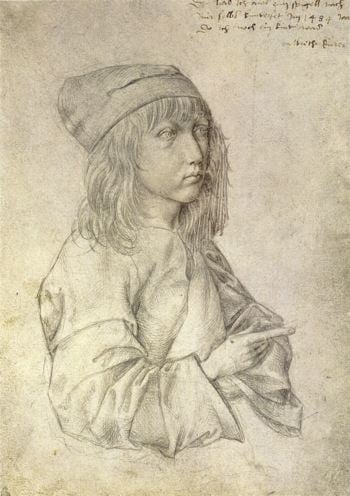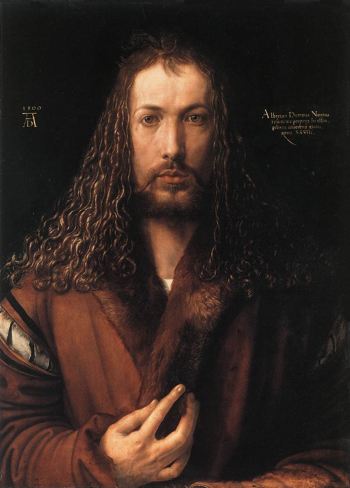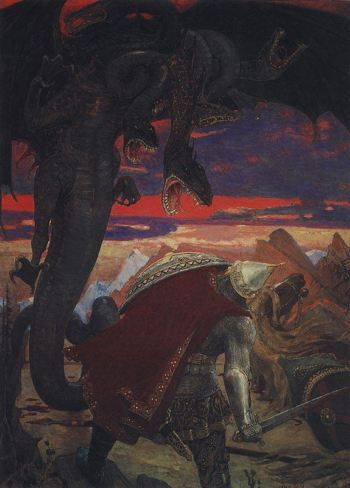Teatime
Stackridge
Our Books Ourselves
My Library
J. D. Wilson, Jr.
There was an article in The New Republic, “Voluminous” by Leon Wieseltier that talks about how the books we read shape the people we become, about how some books will shape our biography. They do not just entertain us or move us, but become us, shape our memories and who we become, or as Wieseltier says “Many books are read but some books are lived, so that words and ideas lose their ethereality and become experiences, turning points in an insufficiently clarified existence and thereby acquire the almost mystical (but also fallible) intimacy of memory. In this sense one’s books are one’s biography.” A library is more than a collection of books, it contains those books with which we have established an intimacy; we have conversed with them, written in them and they have written upon us.
The photograph above is of my library and it suggests a lot about who I am. It is very diverse everything from Proust to Dr. Seuss; from the earliest myths and folk tales to The Changing Light at Sandover. It is very disordered and serendipitous, with stacks in front of books put away in the more conventional fashion, standing up with their backs to us; with many that were purchased on a whim or because they addressed a topic that at the time fascinated, and probably still fascinates, me. They are hugely overstocked suggesting an appetite that it is impossible to satisfy in that few, and certainly not me, are capable of consuming so much. It suggests my curiosity on subjects ranging from the American West, to the Pre-Raphaelite Brotherhood, to astronomy, psychology, and “great” thinkers past and present. But mostly there are stories from Scheherazade to Chekhov, from the mighty walls of Priam to Toad Hall and the Misty Mountains. The song that started things is called Teatime by a group I discovered in 1973 while walking through the streets of Edinburgh and one of the universities there (St. Andrews I think). The song is there because tea is an important adjunct to reading. C. S. Lewis once said something about there not being a book long enough or a cup of tea large enough. He said it much more eloquently of course, but I endorse the sentiment.
My Desk
J. D. Wilson, Jr.
The desk I work at in my library is uncluttered and more organized, though still surrounded by books that have significance for me, Shakespeare’s First Folio (a facsimile, not the original), Aubrey Beardsley’s edition of Le Mort d’Arthur, probably one of my favorite books and one of the books that drove me, in the sixth grade, towards serious literature. I could not read Malory’s and Caxton’s English, though I tried, but I had read one of the stories in my sixth grade reader at school, a modern adaptation, and so I wanted the “big book” the adaptation came from. I struggled with the opening chapters, but unlike some eleven year olds, the book was clearly beyond me. That said, though, any edition that does not open with the words “It came to pass in the days of Uther Pendragon, when he was king of all England, and so reigned, that there was a mighty duke in Cornwall that waged war against him a long time” is no edition for me. There is a sense that a library is a self-portrait of its owner and reveals a great deal about the person who possesses it, and is probably a good reason not to show one’s library to just anyone.
Érik Desmazières: La Salle des planètes, from his series of illustrations for Jorge Luis Borges’s story ‘The Library of Babel,’ 1997–2001. A new volume of Desmazières’s catalogue raisonné will be published by the Fitch-Febvrel Gallery later this year. Illustration © 2011 Artists Rights Society (ARS), New York/ADAGP, Paris.
http://www.nybooks.com/articles/archives/2011/mar/10/how-we-know/?pagination=false
Of course the quintessential library is Jorge Luis Borges’ “Library of Babel.” If the library we have speaks to who we are what do the libraries we imagine say about us. The Library of Babel is essentially unusable in its size and complexity though more complete than any could hope for. But part of what makes a real library a real library is selection, a library that includes everything cannot say much about the collector of the library because the only criteria is that it be in print. Theoretically the Library of Congress is something of an accumulation of everything published in America. It represents the depth and breadth of writing in America but being a collection of everything it does not pass judgment, it does not by exclusion and inclusion suggest what is worth reading and what is not. The case could be made that a public library also does not pass judgment on books, that they merely collect, but their collections often represent the interests of the communities they serve, while also including titles that suggest where the librarian thinks the community should be. Where a personal library may be a self-portrait of the person to whom it belongs a public library in many ways is a self-portrait of the community to whom it belongs.
Self-Portrait at the age of thirteen
Albrecht Durer
http://en.wikipedia.org/wiki/File:Self-portrait_at_13_by_Albrecht_Dürer.jpg
The drawing above and the painting below are self-portraits of Albrecht Durer, one at thirteen and one at twenty-nine. What do these portraits tell us about the artist and how the artist changed over those sixteen years? The first is much simpler and the subject much younger. The painting shows the unique signature that Durer developed, his initials actually, the letter “D” embedded in the letter “A”. Though both are detailed the later painting captures details that are more complex and intricate. The most obvious difference is probably that of color, which is perhaps the primary difference between a drawing and a painting. I have been told that hands are often the most difficult for an artist to do well. The hands in both the painting and the drawing are very well drawn and suggest the thirteen year old Durer was already a master craftsman. For me the significant difference is in what the artist attempts, the painting revealing an artist who has grown in skill and maturity.
Self-Portrait in a Fur-Collared Robe
Albrecht Durer
http://upload.wikimedia.org/wikipedia/commons/4/48/Durer_selfporitrait.jpg
Where paintings are snapshots of sorts, they capture a moment in time and the way things were at that moment, a library is more of a living self-portrait, it evolves and grows as its “curator” evolves and grows, and though the painting suggests growth and an evolution of style over the drawing, the painting does not contain the drawing in the same way a library contains some of its earlier manifestations. Also, with the passage of time some things are discarded and others are added. The library reveals the librarian then in two ways. What is discarded suggests those things that are left behind or outgrown; they reveal a change in intellectual, spiritual, and cultural directions. My first library included many Batman and Superman comics that are now no more. My brother picked up for a dime or a quarter a copy of the first Superman comic. He found it in a junk shop when we were children in San Pedro, California. That comic book and many others from about the same period were purchased by my brother and I from an old thrift shop three or four blocks up the street from the old ferry building and the ferry that would take my brother and I to the shipyard on Terminal Island where our father worked. There was a table toward the front of the store where the comics were scattered in no particular order. There were many of them and we would rummage for the oldest Batman and Superman comics we could find. We had never read them so they were like new to us, and a little cheaper than the brand new ones we could purchase at the drug store.
When he threw that book away he threw away what would come to be worth over a million dollars (the copy of the same edition having sold for that much in a recent auction). What does this suggest about the value of books and what we choose to keep and what we choose to discard. Is my library better served by this Superman comic or by the old Skeat edition of the works of Geoffrey Chaucer, with the navy blue bindings that identify it as one of the Standard Oxford Authors (they are roughly the same age, coming as they both do from the 1930’s)? I suppose how that question is answered says something as well about the keeper of the library and how he has grown as a person and a collector of literature.
Drawing for the novel The War of the Worlds, showing a Martian fighting-machine battling with the warship Thunder Child
Henrique Alvim Corrêa
http://en.wikipedia.org/wiki/File:Correa-Martians_vs._Thunder_Child.jpg
There were a number of other articles about books and the kinds of stories people have been attracted to over the millennia. There was an article in the London Review of Books, “Homer Inc”, on The Iliad and why, despite what Matt Damon said in Goodwill Hunting, it has from the beginning always been more popular than The Odyssey, which on the surface seems to tell the better story. There was a review of a book on the illustrations done for The Thousand and One Arabian Nights, “Visions of the Arabian Nights”, and how they have changed over time. There was a third article on monsters and what makes them attractive to readers, “Monsters, magic and miracles”. Each of these articles touches on different aspects of what makes a story attractive and draws readers to it. There are monsters in the Arabian Nights, but there are no monsters in The Iliad though The Odyssey is populated with a healthy number of monsters. It might be said that it is the humans in The Iliad that are somewhat monstrous in their behavior. Perhaps that is what combat does to people or maybe it is just a snapshot of a more primitive people who do view human life in quite the same way we do. There is also, generally, something epic in the battle with monsters, whether it is the Martians in The War of the Worlds or dragons in Beowulf and other stories from medieval Europe.
Zmey Gorynych, the Russian three-headed dragon
Ivan Yakovlevich Bilibin
http://upload.wikimedia.org/wikipedia/commons/3/38/Ivan_Bilibin_065.jpg
Monsters engage us perhaps because they are so different from us on one level, but on others not so different. We empathize at least as much with the monster in Frankenstein as we do with Frankenstein himself because we understand the monster’s loneliness and desire for companionship. I enjoy the scene in ET where ET and Eliot first see each other and each is terrified by the “monstrous” appearance of the other. ET needs help and Eliot empathizes with ET’s need, in this we see that they both share a common humanity in spite of their terrifying differences and their shared humanity enables each to befriend the other. This suggests that what makes a monster is relative. Polyphemus was not a monster in the eyes of the other Cyclopes with whom he lived. In my library there are many monsters and many monstrous acts depicted. There are monsters, like Frankenstein’s creature and Quasimodo that draw my empathy and others like Grendel and Wells’ extraterrestrial beings that evoke fear and terror. There are also many ghosts who evoke a different kind of terror. There is something in me that enjoys being horrified and seeks out terror in all its grisly forms.
My Immigration Story
Tan Le
TED Talk
The video tells another story of survival and acceptance. It is not a book; it is a video clip of the person telling their story. Oral histories have become more a part of our culture’s historical legacy. Of course there is nothing new in this. In The Last of the Mohicans we are introduced to Hawk-eye and Chingachgook as they discuss, among other things, the relative value of written versus oral history. Neither Hawk-eye nor Chingachgook trust written history, seeing them as shaped more by the interests of the historian than by giving an accurate account of what has occurred. I imagine the veracity of those telling the story, whether written down or spoken, has a lot to do with reliability of the narrative each presents. But how do we classify these stories, whether made up or stating facts? What do we do with films, recordings, photographs, all that other media that tell stories without writing anything down? Many libraries are film libraries or record (CD) libraries. What do these libraries reveal and should an honest “librarian” draw from all forms of story telling? I suppose this is a matter of taste, but Tan Le’s story has some of the qualities of Odysseus’s journey home. There are the predators, the overcoming of the odds, there are elements of fate and destiny. Stories, even true stories, are told after the fact, that is they are selective, events are included others are rejected, based on their relevance to the story being told. This suggests there is purpose to the story, that, even when the story is a true story, a memoir, that there is a kind of order to the events, the suggestion, perhaps, that the outcome was destined.
In the earliest of stories this was true, the Norns or the Fates cut the thread that wove the tapestry of a life when that life reached its end. No matter what the characters involved do, Oedipus will murder his father and will marry his mother. It will all happen inadvertently and no one is to blame for the way things go, but people are accountable nonetheless and all is foreordained. Today it is chance and serendipity that lead to these outcomes. Life is chaotic; there is no order or purpose. When I look at my library it has haphazardly come together the way it has, but there is also a guiding hand, my interests, my values, my tastes in literature; these are the “fates’ that guide my library’s destiny and shape the person my library has made. Perhaps these are the the fates that shape all our destinies. That said, when I look at my library I see the books I have read and collected and they have formed in many ways the person I have become, one can read in them all my strengths and failings, my inadequacies and redeeming qualities. It is where they first took breath.
Self-Portrait
Vincent Van Gogh
http://upload.wikimedia.org/wikipedia/commons/6/6b/SelbstPortrait_VG2.jpg








